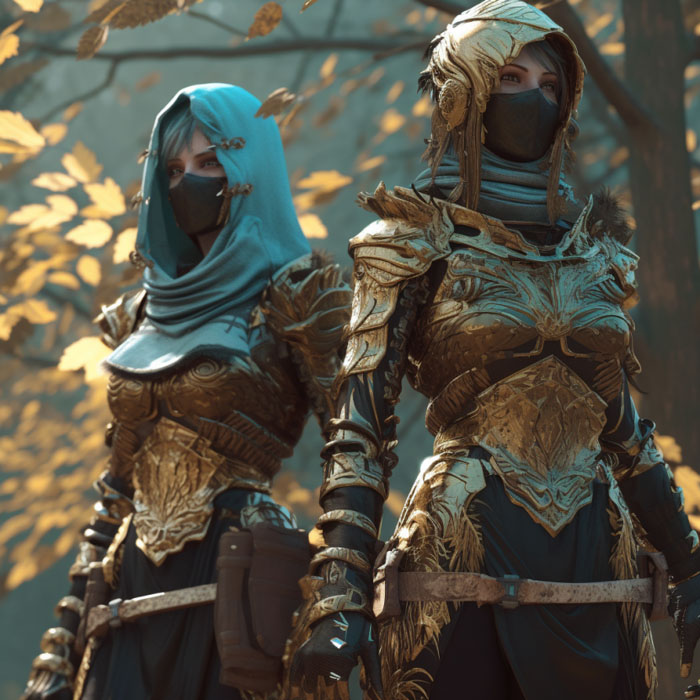
Creating fantasy art for AI is an imaginative and creative endeavor that allows you to explore fantastical worlds, characters, and themes. Fantasy art often involves elements like magical creatures, epic landscapes, and otherworldly settings. Here’s a general guide on how to create fantasy art for AI:
- Inspiration and Research: Start by gathering inspiration from various sources, including fantasy literature, mythology, films, and other artworks. Research different styles and sub-genres within fantasy art to find what resonates with you.
- Conceptualize the Artwork: Develop a clear concept or theme for your fantasy artwork. Consider the story or narrative you want to convey through your art. Think about the elements that make fantasy worlds captivating, such as magic, mythology, and adventure.
- Character Design: If your fantasy artwork includes characters, spend time designing and visualizing them. Think about their appearance, clothing, and personality traits. Create sketches to refine their features and details.
- Creature and World Building: If your artwork involves fantastical creatures or worlds, delve into the creative process of world-building. Consider the ecology, geography, and history of the fantasy world you’re creating. Develop unique creatures and landscapes that fit within this context.
- Composition and Layout: Plan the composition and layout of your artwork. Consider the focal point and the flow of the viewer’s eye through the piece. Experiment with different compositions to find the most visually engaging one.
- Color Palette: Choose a color palette that complements the mood and atmosphere of your fantasy world. Depending on the tone of your artwork, you can use vibrant, ethereal, or dark and moody colors.
- Medium and Tools: Select the artistic medium or digital tools you want to use. Fantasy art can be created using traditional media like pencils, inks, watercolors, or digitally with software like Photoshop or Procreate.
- Detail and Texture: Pay attention to details and textures in your artwork. Fantasy art often includes intricate designs, intricate patterns, and unique textures on characters, creatures, or objects.
- Lighting and Shadows: Use lighting and shadows to create depth and dimension in your artwork. Consider how the light sources in your fantasy world affect the mood and appearance of your subjects.
- Special Effects: If appropriate, incorporate special effects like magical spells, glowing auras, or ethereal atmospheres to enhance the fantastical elements of your art.
- Storytelling: Think about how your artwork tells a story or invites viewers to imagine their own narratives within the fantasy world you’ve created.
- Presentation: Present your fantasy art in a way that complements its theme. This could involve framing it, creating a digital art portfolio, or sharing it through fantasy art communities and platforms.


Remember that fantasy art is a highly imaginative and creative genre, allowing you to explore limitless possibilities. Let your creativity flow, and don’t be afraid to push the boundaries of reality to create captivating and fantastical worlds through your artwork.
You can learn more fantasy Art Prompts Here
Link :>

